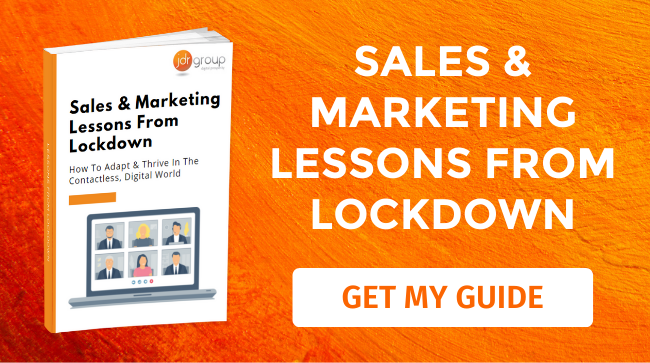Improve Your Sales System In 5 Easy Steps

As a business owner you know how to communicate the value of your product to your ideal customers. The problem small business owners face isn’t so much ‘not knowing how to sell’, but knowing how to systematise their sales strategy to get consistent results and make the best use of their time and money.
It is for this reason that we developed our sales and marketing system – a step-by-step process for building your online profile, generating leads online through your website, blog, and social media, and nurturing those leads into paying customers who come back time and again. It’s a straightforward system that can be implemented in any business – and since 2004 we have used this sales system to help hundreds of businesses from various industries to improve their results from sales.
1) Plan for success
Effective strategy and planning is the essential foundation for any good sales system, and the deeper and more comprehensive the planning stage, the more opportunities you’ll have for success. Know where you want to go, what you want to achieve, what resources you’ll need, how you intend to get there, and the timeframe for doing so. No journey is successful without a destination in mind and a route map, and it’s the same with sales and marketing. Most businesses that fall short of their sales goals do so because of insufficient attention to strategy and planning.
2) Content marketing – provide excellent digital content, for free
The Internet is where sales are made, business relationships are forged, and where prospects find out about their suppliers. The key to successful sales is, therefore, a credible, informative, and relevant online presence, with a broad portfolio of content marketing materials designed to support your customers through their buyer journey. You’ll need a wide range of written and visual content, including high quality blog posts, web content, downloadable e-books, infographics, webinars, and custom videos. This material should be published and disseminated on a regular basis to improve your social profile and search engine position for important keywords, or search phrases.
3) SEO and paid advertising – boost your website traffic
There is no money to be made being the best kept secret on the Internet. To make sales, you need website visitors, and there are several channels available for attracting people to your website. Individual channels, however – e.g. LinkedIn ads – are vulnerable to sudden changes, so it pays to use multiple traffic streams to direct leads to your site. The best choice of channel varies from business to business, but effective strategies include using organic search engine optimisation (SEO), social media marketing (paid and organic), pay per click search engine advertising (PPC), and email marketing.
4) Lead generation – turn website visitors into sales leads
An uptick in web traffic proves you are doing something right in terms of your content marketing and advertising strategies, but the real work doesn’t begin until a person actually arrives at your website. This is your golden opportunity to convince the visitor to get in touch with a sales enquiry, so you can start nurturing them through email marketing until they are ready to make a purchase. You do this by providing clear, well structured, and relevant web content that answers the prospect’s questions about your products and services, and by making it easy for them to take the next steps.
Many businesses encourage this by providing gated downloadable incentive content (e.g. an informative e-book) for free in exchange for an email address and contact details, and plenty of easy-to-use contact forms throughout the site. The goal of this stage is to convert the highest possible percentage of website visitors into sales leads, and to minimise your bounce rate – e.g. people who visit a single page of your site and then disappear.
5) Sales conversion – nurture leads into sales through email marketing
When a sales lead comes through to your business, what happens to it? In most SMEs, the lead is quickly assessed for the urgency of the enquiry – i.e. how ‘hot’ the lead is and how likely the person is to make a sale – and only the hottest leads are passed to the business owner or sales team for immediate follow-up. Every other enquiry is treated as less urgent and may be forgotten altogether. The result is that even the most promising leads may not receive any contact for several days, and there is no system for scoring leads and following up contacts, nor for keeping in touch with people who aren’t immediately ready to buy.
The fact is that 80% plus of the people who get in touch through your website are not yet ready to buy, but they might be in the future. To ensure that as many of these people as possible are converted into sales, and that hot leads don’t go cold, you need a nurturing strategy in place, using automated email marketing. A platform such as HubSpot lets you establish custom email workflows for different types of customer, with new content emailed out when the prospect responds in a certain way, e.g. by clicking on an email link or visiting your prices page.
Find out more
JDR are a HubSpot Diamond Partner, a status granted in recognition of the consistent results we deliver for our customers through targeted use of marketing automation and sales strategies.
We use a proven digital sales and marketing framework that generates replicable results for businesses across a broad spectrum of industries, but with the flexibility to accommodate an equally diverse number of business models and objectives. To find out more about how our sales system might work in practice for your business, please call 01332 343281 today, or send us a message by clicking here.
Image Source: Unsplash



